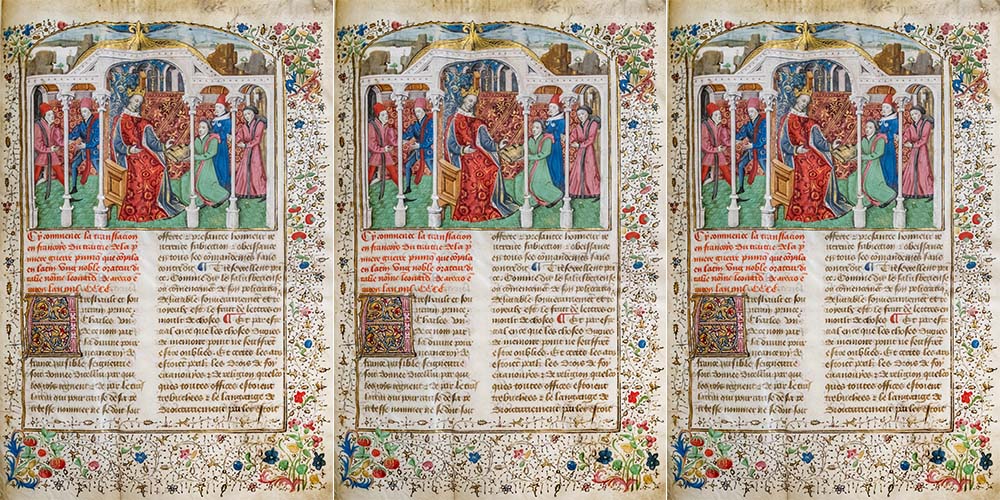“Hidden Friends” now in Basel
The Comites Latentes are a collection of over 200 manuscripts and fragments from the 6th to 20th century. These historical documents are now on loan from the current owners to Basel Historical Museum. They will be stored at Basel University Library, which will enable them to be used in teaching and research and eventually made accessible to the public.
10 February 2022
Records, prayer books and books of hours, literary, administrative and legal texts: in the 1960s, Italian industrialist and author Sion Segre Amar (1910–2003) acquired antique and medieval manuscripts at Sotheby’s in London without any particular thematic criteria. Over the years, he collected a total of 212 manuscripts and manuscript fragments originating from the 6th to the 20th century, the majority of them from the late Middle Ages.
The collection includes religious manuscripts, secular antique literature (Cicero, Virgil, Sallust, Suetonius, Xenophon, etc.) and fragments of illuminated manuscripts, as well as two clay tablets from Mesopotamia. Many of the manuscripts are from Italy or France and are in Latin, but the collection also includes texts in Hebrew, Greek, Italian and French. Many of the manuscripts and fragments are ornately decorated.
Segre Amar himself named his collection Comites Latentes – hidden friends – because he always brought a few of the documents along on his travels. He borrowed the label from the Italian humanist Petrarch, who referred to his books in this way in 1448. Segre Amar’s collection continues to be known by this name today.
A treasure trove for researchers
From 1977, the Comites Latentes were kept at the Bibliothèque de Genève, where researchers were able to examine and publish them. After Sion Segre Amar’s death in 2003, his children Margherita and Emanuel inherited the collection.
For the next 15 years (with possibility of extension), the manuscripts will be on loan to Basel Historical Museum. However, they will be kept at the University Library. With its manuscript reading room, the University Library has the ideal space to allow researchers to examine the manuscripts. “We are delighted to bring this valuable collection into our holdings. It ideally complements our existing collection, the largest collection of medieval manuscripts in Switzerland,” says Ueli Dill, head of the University Library’s historical collection. The Comites Latentes are a rich treasure trove for teachers and researchers of art history at the University of Basel, and for other subjects as well.
Preparing for the public
The collection’s owners, the Historical Museum and the University Library plan to make this historically valuable collection accessible to a broad audience, thus continuing the work that was begun in Geneva.
The manuscripts will be examined and described in the course of various research projects, and the results will be made accessible to the public, for example in exhibitions. Publication in digital form, which had already begun on the e-codices platform, will be continued.



